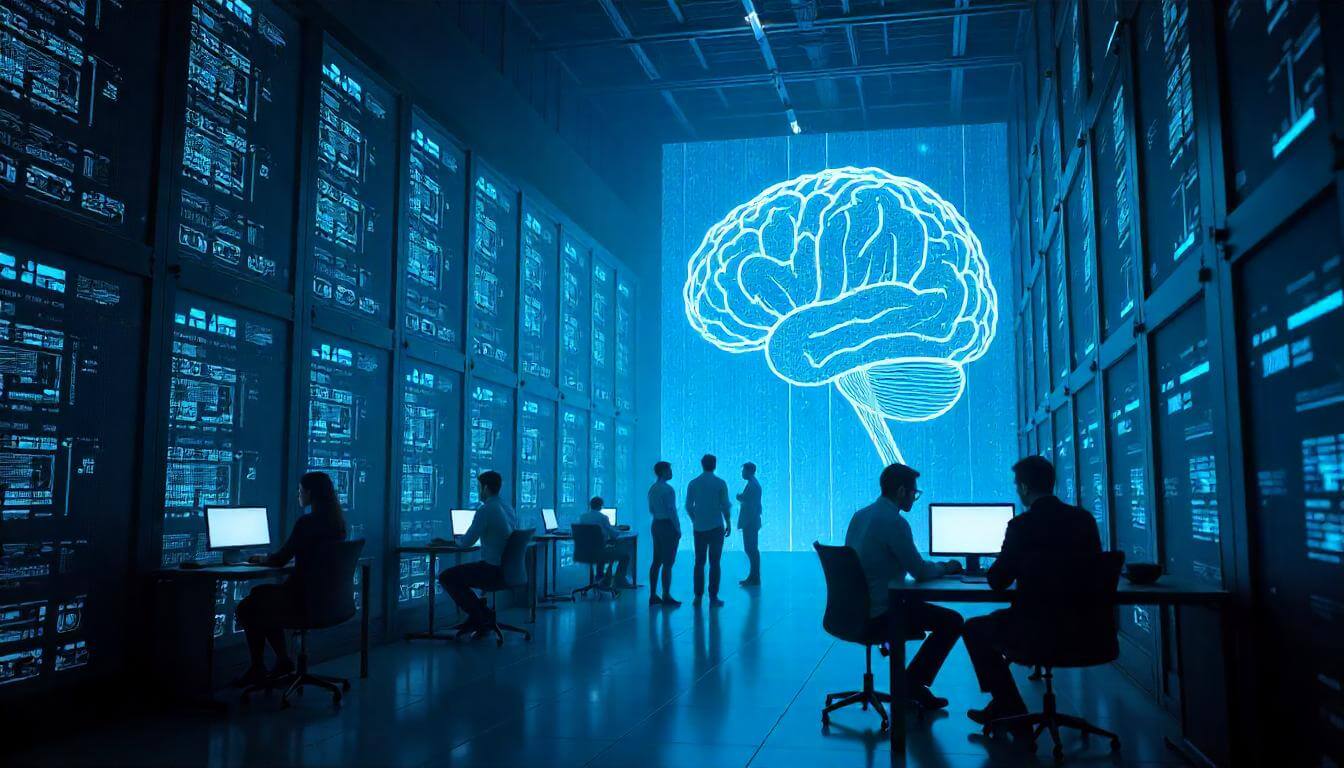In our increasingly interconnected world, digital infrastructure forms the backbone of modern society. Power grids, communication networks, financial systems, and healthcare services all rely heavily on complex digital frameworks. However, this reliance brings heightened vulnerability to cyberattacks. As threats grow more sophisticated, traditional defenses often fall short. A recent $90 million AI security deal underscores a crucial shift in this battle. This substantial investment is designed to revolutionize the protection of vital digital infrastructure, leveraging artificial intelligence to build more resilient and intelligent defenses. This article examines a significant transaction (over $50 million) and its profound implications for global cybersecurity.
The Evolving Threat Landscape: Beyond Traditional Defenses
The nature of cyber threats has transformed dramatically. Attackers now employ advanced persistent threats (APTs), zero-day exploits, and highly sophisticated phishing campaigns. These attacks bypass conventional signature-based security systems. Ransomware, for instance, can cripple an entire organization in hours. State-sponsored actors and organized criminal groups launch sophisticated campaigns. Their targets often include critical national infrastructure, seeking disruption or espionage.
Traditional cybersecurity approaches, while still necessary, frequently operate reactively. They identify threats after an attack has begun or a vulnerability has been exploited. This reactive model leaves precious windows of opportunity for malicious actors. Therefore, a more proactive, adaptive defense mechanism is urgently needed. This necessity has driven the rapid growth in artificial intelligence applications for cybersecurity.
The Power of AI in Cybersecurity: A New Paradigm
Artificial intelligence, particularly machine learning and deep learning, offers a transformative approach to cybersecurity. AI systems can process and analyze vast quantities of data at speeds far beyond human capabilities. This enables real-time detection of anomalies and emerging threats. For example, AI algorithms learn normal network behavior. They then flag any deviations as potential threats, allowing for swift investigation and remediation.
AI-powered security tools also excel at predictive analytics. They analyze historical attack data and current network activity. This allows them to identify vulnerabilities and forecast potential breaches before they occur. Furthermore, AI automates routine security tasks. It aggregates alerts, prioritizes incidents, and even initiates automated responses. This frees up human security analysts. They can then focus on more complex strategic threat hunting. This represents a paradigm shift from manual, reactive defense to intelligent, proactive protection.
The $90 Million AI Security Deal: A Deeper Dive
This specific $90 million AI security deal represents a landmark investment in fortifying digital infrastructure. It focuses on integrating advanced AI capabilities into the cybersecurity operations of critical national systems. The funding will support the development and deployment of AI-driven platforms. These platforms enhance threat intelligence, vulnerability management, and incident response across complex networks.
The core objective is to leverage AI for proactive threat identification. It also aims to strengthen the resilience of interconnected digital assets. The investment targets areas like automated vulnerability research. It also focuses on real-time data analytics for spotting unusual patterns. This capital infusion demonstrates a clear commitment to leveraging cutting-edge technology to stay ahead of cyber adversaries. It acknowledges the vital role of AI in safeguarding the foundational elements of our digital society.
Protecting Digital Infrastructure: Core Applications of AI Security
The applications of AI security in protecting digital infrastructure are multifaceted. Firstly, real-time threat detection and monitoring are paramount. AI-powered systems constantly analyze operational data from power grids, water systems, and transportation networks. They identify subtle patterns that indicate potential cyberattacks, such as irregular power flows or unusual control system commands. This allows for immediate alerts and interventions.
Secondly, predictive analytics play a crucial role. AI models analyze historical data to anticipate potential vulnerabilities. They can forecast attack trends. This enables organizations to patch weaknesses preemptively. Thirdly, automated incident response significantly reduces the impact of attacks. AI systems can automatically isolate compromised network segments. They can also block malicious traffic or initiate fail-safe protocols without human intervention. This minimizes damage and accelerates recovery for critical services.
Enhancing Cyber Resilience: Adapting to New Threats
A primary goal of this $90 million AI security deal is to enhance cyber resilience. Digital infrastructure must not only withstand attacks but also recover quickly and maintain essential functions. AI systems contribute significantly to this resilience. They continuously learn from new threats and adapt their defense mechanisms. This ensures protection against previously unknown (zero-day) attacks.
Furthermore, AI assists in identifying insider threats. It monitors employee behavior and access patterns to sensitive systems. If unusual activity occurs, AI can flag or block suspicious actions. This proactive monitoring helps prevent data exfiltration or sabotage from within. Ultimately, by integrating AI, digital infrastructure becomes more adaptive. It grows more robust. It also becomes better equipped to handle the evolving sophistication of cyber threats.
Strategic Impact: Government, Industry, and Collaboration
The implications of an AI security deal of this magnitude extend beyond immediate technical deployments. It signifies a strategic commitment by governments and industries to elevate their cybersecurity posture. Such investments encourage collaboration between public and private sectors. Government agencies can share threat intelligence with AI security providers. Companies can develop solutions tailored to critical infrastructure needs.
This synergy strengthens national cybersecurity capabilities. It also fosters innovation within the AI security industry. The investment also sets a precedent. It encourages other sectors and nations to similarly invest in advanced AI-driven defenses. Therefore, this $90 million initiative is not just about technology; it is about building a collective, resilient front against global cyber threats, impacting how nations protect their most valuable digital assets.
Navigating Challenges: Data, Ethics, and Integration
Despite its immense potential, implementing AI security solutions comes with challenges. The effectiveness of AI systems heavily depends on the quality and diversity of the data they are trained on. Biased or incomplete datasets can lead to false positives or missed threats. Data privacy is also a significant concern. Training AI models often requires access to large volumes of potentially sensitive information, raising questions about data governance and compliance.
Furthermore, integrating AI security tools with existing legacy systems can be complex. There is a need for interoperability between different security platforms. Ethical considerations regarding autonomous AI decision-making also require careful thought. However, organizations are addressing these challenges. They are implementing robust data encryption. They are ensuring strict access controls. They are also developing ethical AI frameworks. This proactive approach ensures that the benefits of AI security are realized responsibly.
The Future of Digital Protection: Continuous Evolution
The digital infrastructure of tomorrow will be even more interconnected and data-driven. The role of AI in protecting it will consequently become indispensable. Future developments in AI security will likely include more sophisticated predictive capabilities. They will also feature highly automated response mechanisms. Integration with emerging technologies like quantum computing and advanced cryptography will further enhance defenses.
The ongoing evolution of AI models themselves, particularly generative AI, presents both opportunities and new attack vectors. Cybersecurity professionals will need continuous training. They must adapt to these advancements. Investments like this $90 million AI security deal are not one-time solutions. They are crucial steps in an ongoing journey. They reflect a commitment to continuous innovation in digital protection. This ensures that our essential services remain secure in an increasingly complex cyber landscape.
Conclusion: Fortifying the Digital Frontier
The $90 million AI security deal marks a pivotal moment in the ongoing battle for digital infrastructure protection. This significant investment empowers advanced AI technologies to detect, predict, and respond to cyber threats with unprecedented speed and precision. It strengthens the resilience of critical networks. It also establishes a robust defense against an ever-evolving adversary. This proactive embrace of AI is essential. It safeguards the foundations of our digital economy and society. The deal underscores a vital understanding: protecting digital infrastructure is not just a technological challenge, but a strategic imperative for global security and prosperity.

 Why a $90M AI Security Deal Is Protecting Digital Infrastructure">
Why a $90M AI Security Deal Is Protecting Digital Infrastructure">

Komentáre